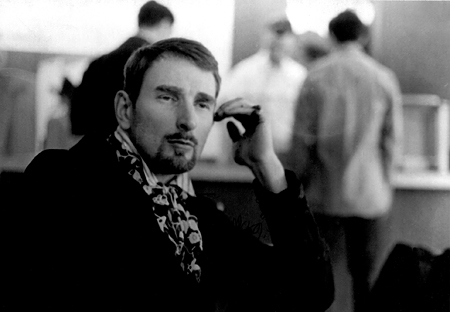|
Reviews of Recent Independent, Foreign, & Documentary Films in Theaters and DVD/Home Video
“I may look a little pale, but that’s because they don’t let me out of the safe very often.” These words appropriately open this bio-documentary. Outside the small circle of downtown New York intellectuals and avant-garde, Smith remained in obscurity, almost in spite of his most well-known film, Flaming Creatures, being banned in 22 states and four countries when it became part of the underground film movement in the 1960s. He was not what one would call successful in the conventional sense. He died of AIDS in 1989 without any money, leaving an incomplete film legacy. But to say anything was conventional about Smith would be moot: the guy was one of a kind, an artist who believed in a form and power of art that was very selective to audiences (or, as might be the case with his late-night screenings in the ‘70s, no audience at all). One interviewee comments he was a “self-made creature of fantasy,” and another, poet and collaborator Taylor Mead, describes Smith as an “extraterrestrial.” I would be more inclined to go with the latter. Overall, Smith reminds me of the Hunter S. Thompson line in Fear and Loathing in Las Vegas about the lawyer Dr. Gonzo: “One of God’s prototypes. A high-powered mutant not even considered for mass production: too weird to live, and too rare to die.” Smith, after growing up in the rural dregs of depression-era squalor, was fascinated and compelled by expression through certain "abstractions" of outcasts. A kind of half outsider artist and half pre-Andy Warhol absurdist, Smith first went through a photography period, where he made color photos with extravagant costumes and sets and actors posing as if in little cinematic vignettes, simply because he couldn’t yet direct his films. For his real directorial work, he round up actors on Manhattan’s Lower East Side (one of which, a transvestite, Mario Montez, was named after one of Smith’s idols, B movie star Maria Montez), and blended in the fantastical with reality. Warhol ends up getting a chunk of screen time, and not without good reason. He was once quoted as saying Smith was the only person he would copy from, and one sees a very strange push and pull short-lived collaboration between them, but the two minds were too much into their own styles to really meet at one point. What might be the most fascinating section of the documentary is where Smith’s rocky filmmaking career takes shape. Flaming Creatures, from the clips presented, is a manically profound farce, a rough 16mm glimpse into Smith’s consciousness, with no sense of pace or overall mood and unapologetically sexually ambiguous. (To say it’s outrageous and improvisational is putting it lightly.) But it’s alive and buzzing with a sense of humor and shameless, lascivious poetry. It was, upon its original underground release, banned, and labeled obscene by New York City.
But Smith was through and through a self-created visual anarchist, an originator of many of the avant-garde forms of filmmaking and art in
the 1960s and beyond. Director Mary Jordan makes her film accessible and engrossing for an audience that might have not gone near a Jack Smith
work in his heyday by unpretentiously revealing Smith in a way that compliments his style. As one sees through the interviews with friends, critics,
admirers, actors, possible lovers, as well as the phantasmagoria in the bits and pieces of his work and audio clips, Smith made
small waves when compared to the more noted filmmakers of his time like Fellini and Godard, but in such circles the effect was extraordinary.
Jack Gattanella
DVD Extras:
On a disc that has taken a year and a half since
its (very) limited theatrical run to be released, there are about a dozen
deleted segments. However, they’re only
bits—each is about a minute-and-a-half to two-minutes long. Interviews include
Mario Montez (who interestingly confesses to having not dressed in drag since
1978) and filmmaker Ken Jacobs. “Colette and
Vivienne Dick on Jack in
|

